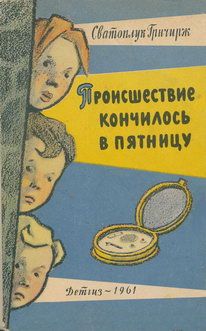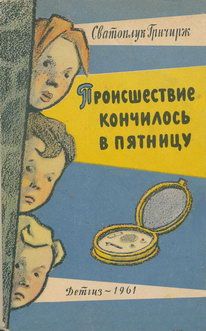Евгений Ильин - Пол и гендер
Trahan D. E., Quintana J. W. Analysis of gender effects upon verbal and visual memory performance in adults // Archives of Clinical Neuropsychology. 1990. V. 5. P. 325–334.
Traxler A. E., McCall W. C. Some data on the Kuder Preference Record // Educ. Psychol. Measmt., 1941. V. 1. P. 253–268.
Traxler A. E., Spaulding G. Sex differences in achivement of independet school pupils as measured by Stanford Achivement Test, Form K // Educ. Rec. Bull., 1954. № 63. P. 69–80.
Trepanier-Street M. L., Romatowski J. A. The influence of childrens literature on gender role perceptions: A reexaminatio // Early Childhood Educational Journal. 1999. V. 26. P. 155–159.
Triandis H. C. Culture and social behavior. N.-Y.: McGraw-Hill, 1994.
Trotman S., Hummond G. R. Sex differences in task dependet EEG asymmetry // Psychophysiol., 1979. V. 16. № 5. P. 429–431.
Trumbull R. A. A study in relationships between factors of personality and inelli-gence // Journal Soc. Psychol., 1953. V. 38. P. 161–173.
Tuana N. The values of science: empiricism from a feminist perspective // Syntheses. – Dordrecht. 1997. V. 106. № 3.
Tucker J. S., Friedman H. S. Sex differences in nonverbal expressiveness: emotional expression, personality and impressions // Journal of Nonverbal Behavior. 1993. Summer. P. 103–118.
Turner G., Turner V. X-linked mental retardation // Journal med. Genetics. 1974. V. 11. № 2. Р. 109–113.
Turner-Bowker D. M. Gender stereotyped descriptor in childrens picture books: Does curiosus Jane exist in literature? //. Sex Roles. 1996. V. 35. P. 461–488.
Twenge J. M. Changes in masculine and feminine traits over time: A meta-analysis // Sex Roles. 1997. V. 36. P. 305–325.
Udry J. R. Biological limits of gender construction // American Sociological Review. 2000. V. 65. P. 443–457.
Ulanov A. Receiving Woman: Studies in the Psychology and Theology of the Feminine. Westminster, Philadelphia, 1981.
Underwooed M. K., Schockner A. E., Hurley J. C. Childrens responses to same-and other-gender peers: An experimental investigation with 8-, 10and 12-year-olds // Developmental Psychology. 2001. V. 37. P. 362–372.
Unger R. K. Towards a redefenition of sex and gender // Am. Psychol., 1979. V. 34. P. 1085–1094.
Unger R. K . Imperfect reflections of reality: Psychology constructs gender // Making a difference: Psychology and the construction of gender. New Haven, L., Yale University Press, 1990.
Unger R., Crawford M. Women and gender: A feminist psychology. N.-Y.: McGraw Hill, 1992.
Unger R., Crawford M. Commentary: Sex and gender: The troubled relationships between terms and concept // Psychological Science. 1993. V. 4 (2). P. 122–124.
UNICEF. The State of the World’s Children. Oxford – N.-Y.: Oxford University Press for UNICEF, 1995. P. 72–75.
Updegraff K., McHale S. M., Crouter A.C. Gender roles in marriage: What do they mean for girls and boys school achievement? // Journal of Youth and Adolescence. 1996. V. 25. P. 73–88.
Urberg K. A. Sex-role conceptualization in adolescents and adults // Developmental Psychology. 1979. V. 15. P. 90–92.
U. S. Bureau of Census. Statistical abstract of the United States. Washington, 1997.
Valdez R. L., Gutek B. A. Family roles: A help or hindrance for working women? // B. A. Gutek, L. Larwood (eds.). Women’s career development. Beverly Hills, Sage, 1987. P. 157–169.
Varnanen A. Age related differences in the conception of intelligence // III European Congress of Psychology. Finland, Tampere, 1993. P. 236.
Visher S. S. Scientist starred, 1903–1943, in «American men of science». Baltimore: Johns Hopkins Press, 1947.
Voyer D., Voyer S., Bryden M. P. Magnitude of sex differences in spatial abilities: a meta-analysis and consideration of critical variables // Psychological Bulletin. 1995. V. 117. P. 260–270.
Vredenberg K., Krames L., Flett G. L. Sex differences in the clinical expression of depression // Sex Roles. 1986. V. 14. P. 37–49.
Waber D. P. Sex differences in cognition: A function of maturation rate? // Science. 1976. V. 192. № 4239. P. 572–574.
Waite L. J., Lillard L. A. Children and marital disruption // The American Journal of Sociology. 2001. V. 96 (4). P. 930–953.
Walker L., Wallston B. Social adaptation: A review of dual earner family literature // L. L. Abate (ed.). The handbook of family psychology and therapy. Homewood, IL, Dorsey, 1985. P. 698–740.
Walker-Andrews A. S., Taylor J. H. Family interaction and the development of moral reasoning // Child Development. 1991. V. 62. P. 264–283.
Walsh M. R. (ed.). The psychology of women. On-going debates. New Haven – London: Yale Univ. Press, 1987.
Ware N., Steckler N. Choosing a science major: The experience of women and men // Womens Studies Quarterly. 1983. V. 11.
Warrenberg S., Pagano R. Sex differences in EEG asymmetry predict performance of visiopatial tasks // Psychophysiol., 1981. V. 18. № 2. P. 171–172.
Wastell C. A. Feminist development theory: Implications for counseling // Journal of Counseling and Development. 1996. V. 74. P. 575–581.
Watson J., Breed W., Posman H. A study in urban conversation: sample of 1001 remarks overheard in Manhattan // Journal Soc. Psychol., 1948. V. 28. P. 121–123.
Wayne S. J., Liden R. C., Sparrowe R. T. Developing leader – member exchanges. The influence of gender and integration // Am. Behav. Science, 1994. V. 37. № 5. Р. 697–714.
Weinberg M., Tronick E., Cohn J., Olson K. Gender differences in emotional expressivity and self-regulation during early infancy // Developmental Psychology. 1999. V. 35. № 1. P. 175–188.
Weinraub M., Clemens I. P., Sockloff A., Ethridge T., Gracely E., Myers B. The development of sex-role stereotypes in the third year: Relationships to gender labeling, gender identity, sex-typed toy preferences, and famile characteristics // Child Development. 1984. V. 55. P. 1493–1503.
Weisfeld G. E., Billings R. L. Observations on adolescence // K. B. McDonald (ed.). Sociobiological perspectives on human development. N.-Y.: Springer Verlag, 1988.
Weitzman L. W. Sex role socialization: A focus on women. Palo Alto (Calif.), Mayfield Publishing Co., 1979. V. 12.
Wesman A. G. Separation of sex groups in test reporting // Journal educ. Psychol., 1949. V. 40. P. 223–229.
Whalen R. E. Brain mechanisms controlling sexual behavior // Beach F. A. (ed.). Sexuality in Four Perspectives. Baltimore – London, 1977. P. 215–246.
White D., Woollett A. Families: a context for development. London: Palmer Press, 1992.
Whitam F. L. The homosexsual role. A reconsideration // Journal of Sex Research, 1977. V. 13. P. 1–11.
Wichstrom L. The emergence of gender difference in depressed mood during adolescence: The role of intensified gender socialization // Developmental Psychology. 1999. V. 35. P. 232–245.
Wild H. H., Barrett S. E., Spence M. J., O’Toole A. J., Cheng Y. D., Brooke J. Recognition and sex categorization of adults and childrens faces in the absence of sex stereotiped cues // Journal of Experimental Child Psychology. 2000. V. 77. P. 269–291.
Wiley M. G., Eskilson A. Gender arid family/ career conflict: Reaction of bosses // Sex Roles. 1988. V. 19. P. 445–465.
Wichims R. A. Queer theory, gender theory. Los Angeles: Alyson Books, 2004.
Williams C. L. Gender differences at work: Women and men in nontraditional occupations. Berkeley: University of Carolina Press, 1989.
Williams H. D . A survey of predelinquent children in ten middle western cities // Journal juv. Res., 1933. V. 17. P. 163–174.
Williams J. E . Pankultural gender stereotypes revisited: The Five Factor Model // Sex Roles. 1999. April.
Williams J. Unbending gender. Oxford: Oxford University Press, 2000.
Williams J. E., Bennet S. M., Best D. L. Awareness and expression of sex stereotypes in young children // Developmental Psychology. 1975. V. 5(2). P. 635–642.
Williams J. E., Best D. L. Sex stereotypes and intergroup relations // S. Worshel, W. G. Austin (eds.). Psychology of intergroup relations. Chicago: Nelson-Hall, 1986. P. 244–259.
Williams J. E., Best D. L. Sex and psyche: Gender and self viewed cross-culturaly. Beverly Hills, Sage, 1990.
Wilson G. Equal, but different // The Times Higer Education Supplement. Times of London, 1994. March, 25.
Wilson D. W., Molleston J. L. Effects of sex and type of humor on humor appreciation // Journal of Personality Assessment. 1981. V. 45 (1). P. 90–96.
Wilson J. D., George F. W., Griffin J. E. Hormones and sexual behavior // Science. 1981. V. 211. P. 1278–1284.
Wilson W. Sex differences in response to obscenities and bawdy humor // Psychological Report. 1975. V. 37 (Pt. 2). P. 1074.
Witelson S. F. Sex and synile hemisphere: Specialization of the right hemisphere for spatial processing // Science. 1976. V. 193. № 4251. P. 425–427.
Witkin H. F. et al. Personality through perception. N.-Y.: Harper, 1954.
Witty P. A genetic study of fifty gifted children // 39-th Yearb., Nat. Soc. Stud. Educ., 1940. Part II. P. 401–409.
Wolf D. A., Wolf V. V., Best C. L. Child victims of sexual abuse // V. B. VanHaselt, R. L. Morrison, A. S. Bellack, M. Herson (eds.). Handbook of famile violence. N.-Y.: Plenium, 1988.
Wood W. Meta-analytic review of sex differences in group performance // Psychol. Bulletin. 1987. V. 102. № 1. Р. 53–71.
Wood J. T., Eagly A. H. A cross-cultural analysis of the behavior of women and men: Implications for the origins of sex differences // Psychological Bulletin. 2002. V. 128 (5). P. 699–727.
Wormack L. Sex differences in factorial dimension of verbal, logic, mathematical and visuospatial ability // Perceptual and Motor Skills. 1980. № 2. Р. 455.
Worth M. R. Adults // J.A.Brown, R.Y. Pate Ir. (eds.). Being a counselor. Pacific Grove CA: Brooks Cole, 1983. P. 230–252.
Yamamuchi K., Temper D. The development of a money attitude scale // Journal of Personality Assessment. 1982. № 46. Р. 522–528.
Yamaguchi M. K., Hirukava Т., Kanasava S. Judgment of gender through facial parts // Perception. 1995. V. 24. P. 563–575.
Yamauchi H. Effects of Verbal Cues of Fantasy of Fear of Success // Psychological Reports. 1989. V. 65(1). Young E. Animus and Anima. N.-Y., 1957.
Zajonc R. Attitudinal effects of mere exposure // Journal of Personality and Social Psychol., 1968. V. 9. P. 1–27.
Zanna M., Crosby F., Loewenstein G. Male reference groups and discontent among female professionals // B. A. Gutek, L. Larwood (eds.). Woman’s career development. Beverly Hills, Sage, 1987.
Zaslow M. J., Hayes C. D. Sex differences in children’s responses to psychosocial stress: Toward a crosscontext analysis // M. E. Lamb, A. L. Brown, B. Rogoff (eds.). Advances in developmental psychology. Hilksdale, NJ, Erlbaum, 1986. V. 4. P. 285–338.
Zeichner A., Parrott D. J., Frey F. C. Gender differences in laboratory aggression under responce choice conditions // Aggressive Behavior. 2003. V. 29 (2). P. 95–106.
Zill N. U. S. children and their families: Current conditions and recent trends, 1989. Newsletter of the Society Research in Child Development. 1991. P. 1–3.
Примечания
1
Так, в книге Ш. Берн, Т. В. Бендас «Практикум по гендерной психологии» есть глава «Гендерный аспект (!) взаимосвязи биологических и психологических характеристик личности».
2
«Диморфизм» – существование двух разных форм.
3
Последнее вносит путаницу при чтении этой литературы, так как в нашем понимании секс – это сексуальное поведение, а не пол.
4
Подробнее об этой теории см.: Гордон А. Диалоги-2. М.: Предлог, 2005. С. 221–258.
5
Латерализация полушарий характеризуется размещением тех или иных функций либо в левом, либо в правом полушарии.
6
Степень выраженности асимметрии рук показывает, насколько процентов правая рука сильнее левой.
7
Предрассудок – неоправданно негативная оценка какой-либо группы или отдельных ее членов.
8
В связи с этим нельзя не упомянуть довольно интересную книгу Л. Я. Якобзона (1929), в которой в противовес всем этим пренебрежительным взглядам на женщин представлена позиция равноправия достоинств мужчин и женщин. Эта книга интересна и тем, что в ней дан анализ почти неизвестных сейчас работ по вопросам пола, изданных в конце XIX – начале XX в.
9
Подробное рассмотрение данного вопроса дано в монографии: Клецина И. С. Психология гендерных отношений. СПб., 2004.
10
Основные показатели по статистике труда. М.: Госкомстат РФ, 1995. С. 143, 205.
11
Деловая женщина. 1992. № 7–8.
12
Толстой А. К. История государства Российского от Гостомысла до Тимашева. Собр. соч.: В 4 т. М.: Правда, 1969. Т. 1. С. 381–382.
13
Ведомости Верховного Совета СССР. 1990. № 10.




